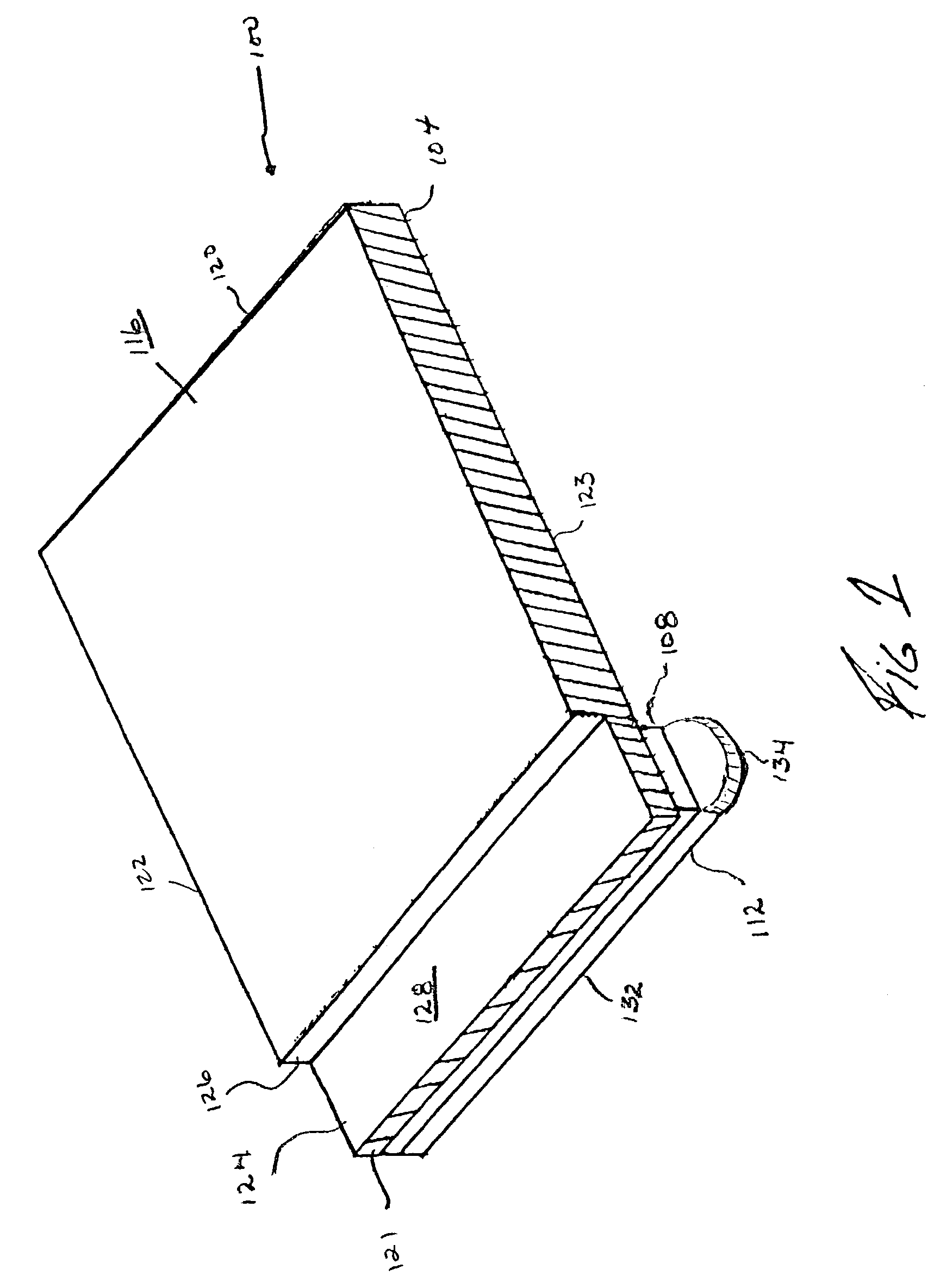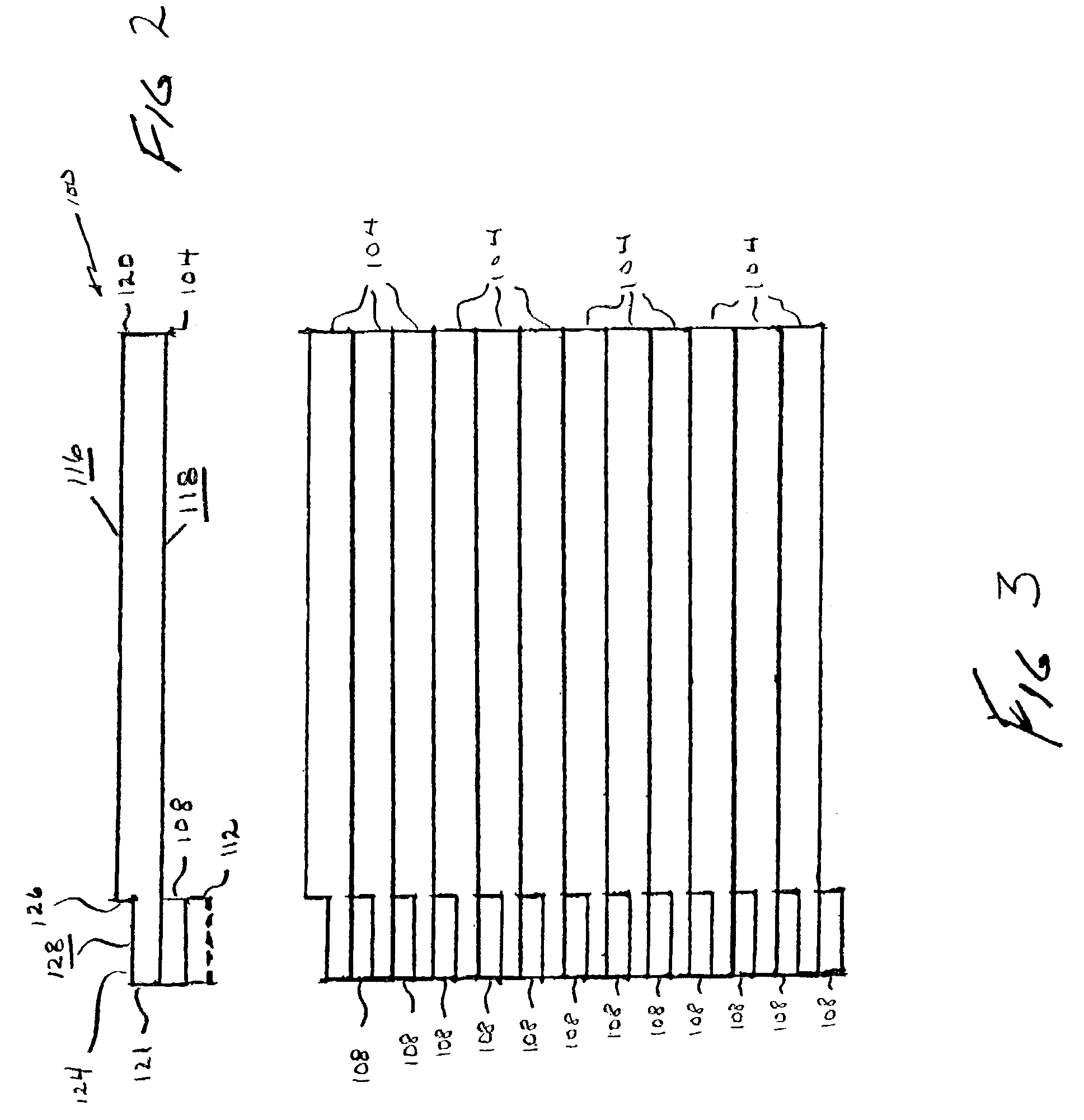Substrate sheets with removable strip
- Summary
- Abstract
- Description
- Claims
- Application Information
AI Technical Summary
Benefits of technology
Problems solved by technology
Method used
Image
Examples
example i
[0036]Composite sheets were made using 20-pound bond paper 156 mm in width and 279 mm in length and commercially available as Astrobright.RTM., from Wausau Papers, Inc., Wausau, Wis. A double-coated tape web, available as 3M Scotch Brand Tape Product #109.RTM., available from 3M Company, St. Paul, Minn., was applied along (proximate) one edge of each composite sheet. A tab on the release layer was then formed, the tab extending from a composite sheet lateral edge. However, a self-adhesive, comprising a base stock plus adhesive and a release liner (layer), could have been used as well. Indicia were printed on the composite sheet using a Mark Andy 2200.RTM. flexographic printing press. However, other printing equipment, e.g., a Gross C700.RTM. or C500.RTM. press with an Enkel Paster.RTM. and a Vits Sheeter.RTM. and a rotary die cutting station, could have been used. The present composite sheets were then aligned manually. When the printed composite sheets were stacked in a desired ord...
example ii
[0037]Composite sheets were made using the materials and protocol described in Example I, except that the sheets were crushed to form lines of weakness prior to the adhesive layers and release liners being disposed thereon. The lines of weakness provided generally linear borders for separating portions of the composite sheets. The composite sheets were printed using a Hewlett-Packard LaserJet 5L Laser Printer.RTM. by passing the composite sheets through the printer twice to print both surfaces. Some of the printed sheets were used as single, custom-printed, blank documents to be bound after being filled out. However, others were aligned and stacked, generally as described in Example I.
example iii
[0038]Composite sheets were made using sheets of 20-pound bond paper, a low-peel pressure-sensitive adhesive, and a silicone release material. Adhesive layers were formed near one lateral edge the composite sheets using a 5 mm-wide strip of Scotch Brand Tape Product #109, a double-coated tape with a low-peel adhesive on one side and a permanent adhesive on the other side. The side of the tape with the permanent adhesive was applied to the paper surface about 2 mm from a lateral edge A release layer with a tab extending from the lateral edge was then formed on each composite. The composite sheets were crushed in a band proximately 1 mm from an edge to form paths of weakness. The sheets were printed on both sides with a Hewlett-Packard LaserJet 5L Laser Printer.RTM. and bound using the protocol of Example I.
PUM
| Property | Measurement | Unit |
|---|---|---|
| Thickness | aaaaa | aaaaa |
| Pressure | aaaaa | aaaaa |
| Sensitivity | aaaaa | aaaaa |
Abstract
Description
Claims
Application Information
 Login to View More
Login to View More - R&D
- Intellectual Property
- Life Sciences
- Materials
- Tech Scout
- Unparalleled Data Quality
- Higher Quality Content
- 60% Fewer Hallucinations
Browse by: Latest US Patents, China's latest patents, Technical Efficacy Thesaurus, Application Domain, Technology Topic, Popular Technical Reports.
© 2025 PatSnap. All rights reserved.Legal|Privacy policy|Modern Slavery Act Transparency Statement|Sitemap|About US| Contact US: help@patsnap.com



